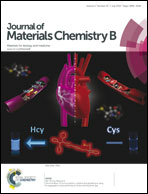Silicate-based bioceramics for periodontal regeneration
Abstract
Periodontal disease is characterized by the destruction of the tissues that attach the tooth to the alveolar bone. Various methods for regenerative periodontal therapy including the use of barrier membranes, bone replacement grafts, and growth factor delivery have been investigated; however, true regeneration of periodontal tissue is still a significant challenge to scientists and clinicians. The focus on periodontal tissue engineering has shifted from attempting to recreate tissue replacements/constructs to the development of biomaterials that incorporate and release regulatory signals to achieve in situ periodontal regeneration. The release of ions and molecular cues from biomaterials may help to unlock latent regenerative potential in the body by regulating cell proliferation and differentiation towards different lineages (e.g. osteoblasts and cementoblasts). Silicate-based bioactive materials, including bioactive silicate glasses and ceramics, have become the materials of choice for periodontal regeneration, due to their favourable osteoconductivity and bioactivity. This article will focus on the most recent advances in the in vitro and in vivo biological application of silicate-based ceramics, specifically as it relates to periodontal tissue engineering.


 Please wait while we load your content...
Please wait while we load your content...